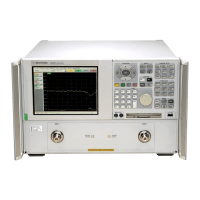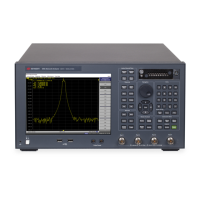User’s Guide 23
E8362/3/4C Option H85
Example: Making High Power Measurements with Option H85
Select Source Port Power Ranges
1. Select a power range that will not exceed the maximum estimated power level, but will
force the DUT into compression. For example; if your booster amplifier has a gain of
+15 dB, the DUT will compress if supplied with +15 dBm. You may need to adjust the
analyzer output power to not exceed 0 dBm.
To adjust the output power follow steps a and b.
a. In the Stimulus drop-down menu select Power > Power and Attenuators.
b. In the application window, clear the Auto Range box and type [10 dB] into
Atten. Control for Port 1. Verify that Port Powers Coupled is checked to ensure that
Ports 1 and Port 2 power levels are the same. Press OK.
2. Estimate the maximum amount of gain that could be provided by the DUT, and as a
result, the maximum amount of power that could be received by Test Port 2 when the
DUT is in compression. For example; if a DUT with a maximum gain of +10 dB receives
an input power of +10 dBm from Test Port 1, the maximum amount of power that could
be received by Test Port 2 is +20 dBm. An isolator or attenuator maybe required
depending on the amount of power at Test Port 2. For Port 2 isolators and attenuator
connections, an isolator is place between the CPLR THRU and SOURCE OUT as shown
in Figure 10.
